10. The absolute and relative dullness of the heart. Surface projection of the contour and valves of the heart. The histology of the blood. The formation of platelets, monocytes and lymphocytes (thrombopoesis, monocytopoesis, lymphopoesis).
Anatomy: The absolute and relative dullness of the heart. Surface projection of the contour and valves of the heart.
Dullness of Heart:
Relative and absolute dullness of heart is related to percussion of the heart
Using fingers to tap on the chest wall, and listening to sound, one can approximate the size of the heart/lungs
Starting from lower L side of rib cage, tapping in a diagonal line towards upper R side:
The area where just lung is present – there is a resonant sound (like beating on a drum)
Area w/ Heart + lung = sound is relatively dull (compared to resonant sound)
now can estimate size of heart
Points where relative dullness begins = Surface projection of heart borders
- SVC = 3rd R rib, next to sternum
- R limit of coronary groove = 6th IC space, 2-3 cm R of sternum
- Apex of Heart = 5th IC space, 9 cm left = also called location of Apex beat
- Apex beat = pulse resulting from apex of heart being forced against ant thoracic wall when L ventricle contracts
- L limit of coronary groove = left 3rd rib, 3 cm left
Area w/ just heart = sound is totally dull
- Technically, where heart not covered by lung/pleura
- Where heart has direct contact w/ ant thoracic wall (except for pericardium)
- *Kind of like Space of Traube for stomach
- usually you start hearing this b/w 4th & 6th rib, parasternally *on L side*
Location of resonant sound – location of absolute dullness = size of lung
CLINICAL NOTE – If you never hear absolute dullness, lungs are enlarged, and there is no point that the heart projects to surface w/o lung in front of it.
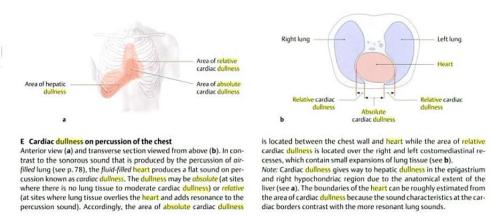
Relative vs Absolute dullness of heart
Auscultation Points of heart:
- Where we listen for valves of heart,
- NOTE – in order to not get confused, doctors like to listen for diff valves of the heart as far apart from each other as possible,
- The sound of the valve closing is carried in the direction of blood flow in straight line.
- For example, This is why we listen for biscuspid or L AV valve @ apex of heart, because flow of blood goes towards that directly from the AV valve.
Auscultation Points of valves:
- Bicuspid valve = Apex, 9cm midline in L 5th IC space
- Tricuspid valve = Sternal end, R 5-6 IC space
- Aortic valve = sternal end, R 2nd IC space
- Pulmonary valve = Sternal end, L 2nd IC space
(Sternal end, means the end of the rib that connects to the sternum, starting from the sterno-chondral joint of the rib.)
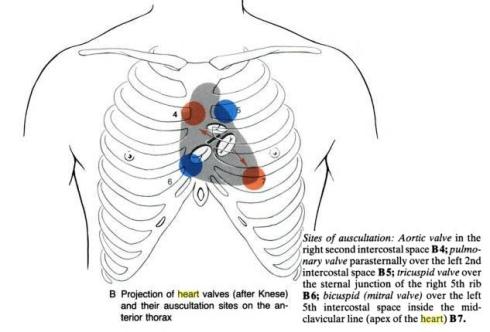
Auscultation points of heart - arrows show blood flow - so we know where we can listen
Surface Projections of Heart:
We project two parts of the heart onto the surface, the borders of the heart, as mentioned earlier, and anulus fibrosus (the fibrous “skeleton” of the heart)
Tip!! = Find a picture of heart sitting within ribs, and draw it yourself, you’ll never forget it.
Borders of Heart:
- Sup = Convex line from inf border 2nd L cc –> sup border of 3 R cc
- Right = convex line from 3 R cc –> 6th R cc
- Inf = convex line from 6th R cc –> 5th IC space close to L midclavicular line
- Left = convex 5th IC space close to L midclavicular line –>inf border 2nd L cc

X ray of Heart - need to know 4 test

x-ray-of-heart-diagram
Projection of Anulus Fibrosus:
- Draw 2 convex lines connecting the lower R corner to upper L corner
- You’ve just drawn a line from the R limit of the coronary groove to L limit of it.
- These two lines are the surface projection of anulus fibrosus, which of course, has the valves of the heart in it
- Remember,you show location of anulus fibrosus externally as coronary groove
- *See next topic for more info on anulus fibrosus
From lower R corner to upper L corner, think logically about what valve is first. (picture a heart in hand, in anatomical position)
- R AV valve comes first, being most lateral and R of the valves
- Left AV valve is next, most lateral and L of the valves, deeper than both aortic and pulmonary valves
- Aortic valve comes next, leading from R ventricle – more superficial to the R AV valve
- Pulmonary valve is last, because pulmonary trunk is just L to asc aorta, and slightly deeper to it
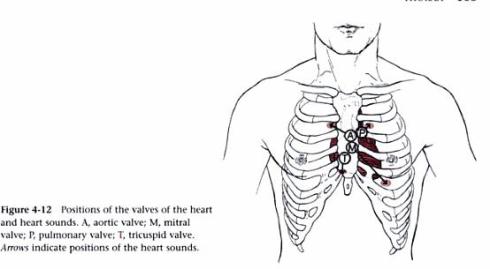
Note there seems to be some discrepancy, because some sources have mitral valve as 2nd, and some as last. I decided to stick w/ BRS book on this one. – B/c that is what I said on the 2nd SCT and he said it was right. Rosa, however said that mitral valve was last. I think you are safe as long as you say which is most R and most L and what is deeper and what is superficial.
Histology:The histology of the blood.
Embryology:The formation of platelets, monocytes and lymphocytes (thrombopoesis, monocytopoesis, lymphopoesis).
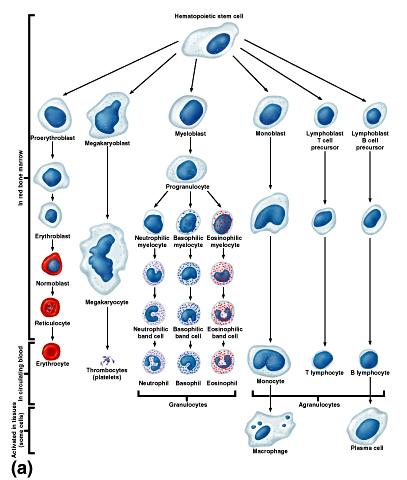

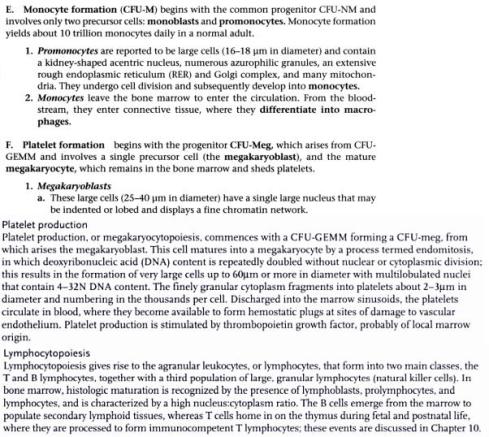

So , how are you going tocelebrate this particular Easter Holiday?
why are some histo topics absent??
Honestly, we just didnt finish. We left it open for anyone to jump in and do that, and we’d give them full credit, but so far, no one has taken us up on it. 🙂
Haha thanks for the reply tho’.. i’m now in my 3rd year! Ur material helped alot!! 🙂
Great! You want to help us finish? 🙂
Will definitely do if i can!! 🙂